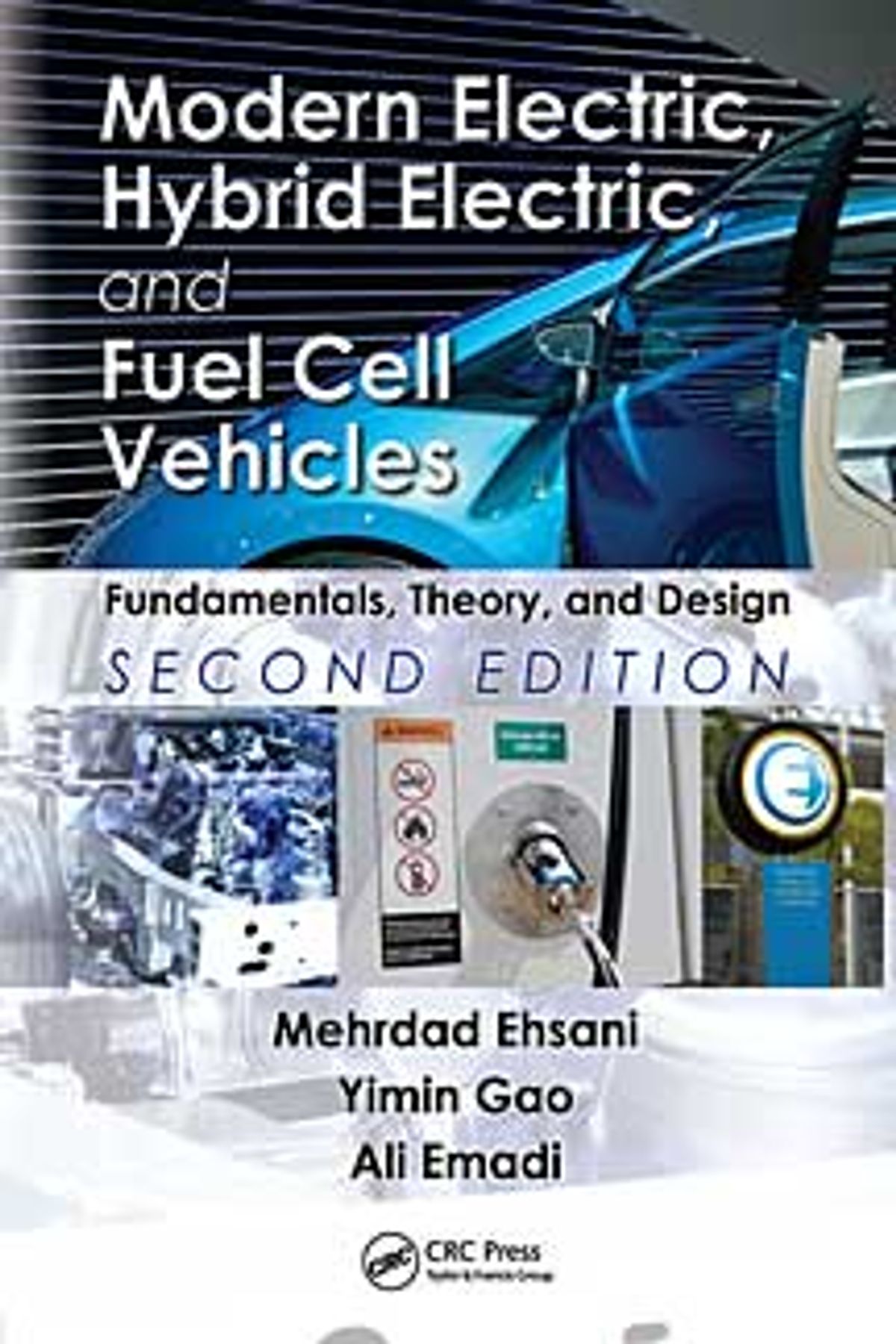Modern Electric, Hybrid
Electric, and Fuel Cell
Vehicles: Fundamentals,
Theory, and Design,
Second Edition;
By Mehrdad Ehsani,
Yimin Gao, and Ali Emadi;
CRC Press, 2009;
557 pp.; $129.95;
ISBN: 978-1-4200-5398-2
A popular but nonsensical idea, resident in the engineering departments of many universities, is that when it comes to hybrid vehicles, mechanical engineers are unable to cope with the electrical engineering, and electrical engineers are unable to cope with the mechanical engineering.
Since 2005, the textbook Modern Electric, Hybrid Electric, and Fuel Cell Vehicles: Fundamentals, Theory, and Design has introduced electrical engineering, mechanical engineering, and computer engineering students to hybrid vehicles. It has also provided a much-needed reference for working engineers.
In a new edition released late last year, authors Mehrdad Ehsani, Yimin Gao, and Ali Emadi have done an outstanding job of updating and improving what was already the world’s leading introductory textbook on the topic. The first edition has been translated into Chinese, and this reviewer expects the second to be translated into several more languages in both Asia and Europe.
The new edition couldn’t have come at a better time. Here in Michigan, still the epicenter of U.S. vehicular R&D, there is a great need to reeducate experienced engineers to work on electric vehicles, a need only partially met by the state’s Academy for Green Mobility. In addition, the U.S. Department of Energy is currently funding the development of electric-vehicle courses and laboratories at five Michigan universities. Interestingly, when the Green Mobility Institute polled Michigan’s electric-vehicle companies regarding their education needs, the companies said that electrical engineering constitutes over 85 percent of the course content they need.
If hybrid R&D in the United States is moving beyond Michigan, it is due in part to the efforts of the three authors. Ehsani has built an outstanding program at Texas A&M University, as has his former student, Emadi, at the Illinois Institute of Technology. (Gao is a member of the research staff in Ehsani’s laboratory.) Students at both schools are emerging as world leaders in hybrid-vehicle research and starting major electric-vehicle research programs at universities throughout the world.
This book, and the courses based on it, could transform the design and system integration of vehicles. Currently, most car companies employ mechanical engineers for hybrid-vehicle system design and system integration, and then use electrical and computer engineers to do more specialized work. But EEs or computer engineers who have taken a two-course sequence based on Modern Electric, Hybrid Electric, and Fuel Cell Vehicles will be well prepared to do system design and integration and manage the details of controls, sensors, power electronics, electric machines, electromagnetic interference, insulated-gate-bipolar-transistor electrical and thermal behavior, and IGBT reliability. My guess is that successful hybrid-vehicle companies will reverse tradition and use EEs as their electrical drivetrain system designers and integrators, while MEs will work in more specialized roles such as heat transfer and cooling system design.
To be sure, a textbook alone cannot teach complicated engineering concepts unfamiliar to undergraduate seniors and first-year graduates just getting their feet wet in the one discipline or the other. I recommend that such introductory courses be cotaught by a mechanical engineering professor and an electrical engineering professor. ME students should take courses that introduce them to electrical and magnetic circuits, three-phase power, semiconductor switches, rectifiers, and DC-to-DC converters and inverters, while the EE students should have under their belts statics, thermodynamics, heat transfer, fluid mechanics, and the analysis of dynamic mechanical systems. All students should take an introductory course in control systems.
Adding simulations and laboratory demonstrations to courses taught from Modern Electric, Hybrid Electric, and Fuel Cell Vehicles would further reinforce the learning experience for the student. In fact, I suggest that the next edition include the design of laboratory experiments and use of simulation tools.
About the Author
James Gover is an IEEE Fellow and professor of electrical engineering at Kettering University in Flint, Mich.

